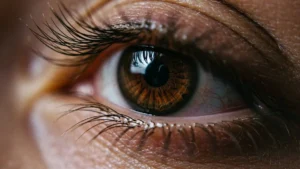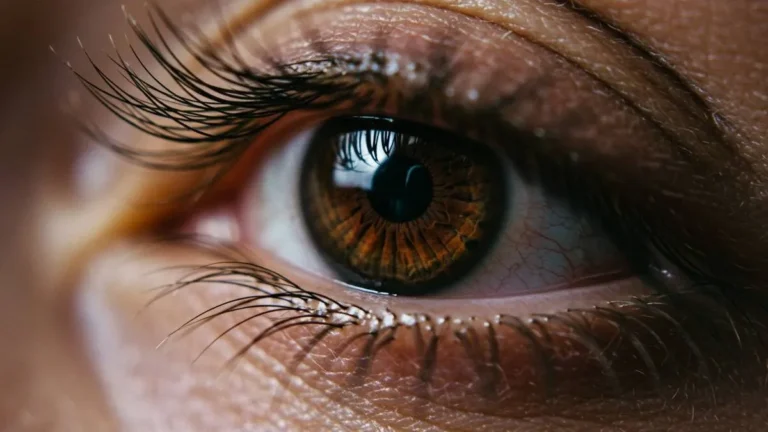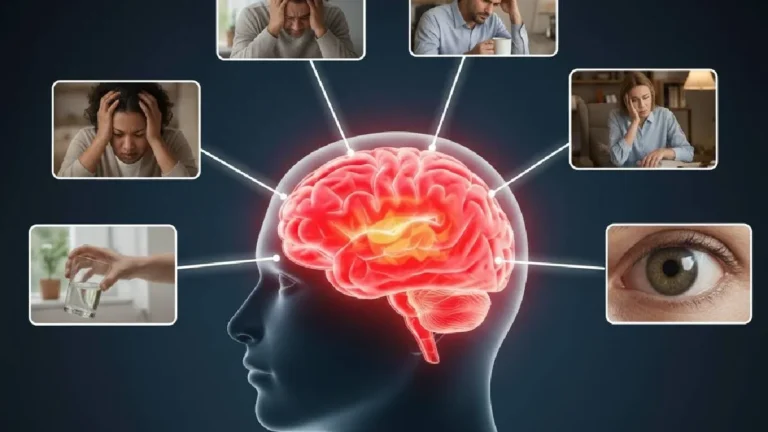Headaches at the back of the head are a widespread health problem, particularly common among people who work long hours at a desk. In this article, you’ll learn about the different types of back of the head pain, the most common triggers, and how to effectively treat the symptoms.
What types of back-of-the-head headaches are there?
Pain in the back of the head can have various causes and vary in severity. These main types stand out:
Tension headaches
The most common cause of discomfort in the back of the head is tension headaches. They manifest as a dull, pressing pain that feels as if the head is wrapped in a tight band. This pain typically begins in the neck and then radiates to the back of the head. Tension in the neck muscles is often the trigger. Learn more about tension headaches here.
Cervicogenic headaches
In cervicogenic headaches, the pain originates directly in the cervical spine. The pain usually begins on one side of the neck and then spreads to the back of the head. It is characteristic that the pain can worsen with certain head movements. They are often associated with restricted neck movement.
Differentiation from migraine
Unlike migraines, headaches at the back of the head are rarely throbbing or pulsating. The typical accompanying symptoms of migraines, such as nausea and sensitivity to light and noise, are also usually not present. Nevertheless, a migraine attack can also be noticeable through pain in the back of the head.
The most common triggers for headaches at the back of the head are
The most common cause of headaches at the back of the head is tension in the neck area. This often results from:
- prolonged sitting in an unfavorable posture, especially when working on a screen,
- a forward-tilted head posture, for example, when using smartphones,
- too little exercise in everyday life and/or
- one-sided strain at work or during sports.
The psyche also plays an important role in the development of back headaches:
- Persistent stress at work or in your private life leads to increased muscle tension.
- Lack of sleep or poor sleep quality puts strain on the neck and head.
- Inner tension and worries can manifest themselves in physical complaints.
In addition to tension and stress, other factors can also trigger headaches in the back of the head. For example, undiagnosed vision problems can lead to poor head posture, as those affected subconsciously try to see better. High blood pressure can also sometimes manifest itself as pain in the back of the head. Certain foods and drinks, especially those containing caffeine, can also trigger symptoms. Some people experience a condition called occipital neuralgia, in which the nerves in the back of the head are irritated, resulting in characteristic pain patterns.
These various triggers can occur individually or in combination. For successful treatment, it is important to identify the individual causes.
When should you see a doctor?
In certain cases, a visit to the doctor is urgently recommended. Seek medical help if:
- The pain occurs suddenly and very severely,
- additional fever, nausea, or visual disturbances occur,
- The symptoms begin after an accident or fall,
- The headache lasts for several days and/or
- Neurological symptoms such as numbness may occur.
Treatment options for back-of-the-head pain
The treatment of headaches at the back of the head depends on the individual cause. Various therapeutic approaches have proven particularly effective:
Physiotherapeutic treatment
Since headaches at the back of the head are often caused by tension, these must first be relieved. Physiotherapy can help here. Using targeted techniques, the therapist can relieve the tension:
- Manual therapy releases blockages in the cervical spine.
- Gentle stretching exercises for the neck relax the muscles.
- Trigger point treatments loosen painful muscle tension.
- Physiotherapy exercises sustainably strengthen the neck muscles.
Drug therapy
Medication can provide relief for acute pain. Mild to moderate pain can often be treated with over-the-counter painkillers. However, anyone who suffers from frequent pain should discuss taking medication with a doctor. For severe tension, muscle relaxants can also help. However, it is important to avoid long-term use of painkillers.
How to prevent headaches at the back of the head
To prevent headaches at the back of the head, you can take some important measures in your daily life:
The right sleep
A healthy sleeping position can prevent neck tension. Ergonomically shaped mattresses and pillows provide optimal support for the cervical spine. The pillow’s height should be chosen so that the head is in a neutral position and is neither tilted up nor down.
Ergonomics at the workplace
An ergonomically designed workstation can prevent tension in the neck and head area. The screen should be at eye level so that the head doesn’t have to be constantly tilted. The forearms should rest comfortably on the desk, and the shoulders should remain relaxed. Regular breaks and occasional stretching of the neck muscles are also particularly important.
Exercise is the key to prevention.
Regular physical activity prevents tension. The following are particularly suitable:
- moderate endurance training such as swimming, cycling, or walking,
- gentle stretching exercises for the neck and shoulder area,
- targeted strengthening exercises for the cervical spine or
- Activities such as yoga or Pilates that improve posture and flexibility.
Stress management and relaxation
Progressive muscle relaxation or breathing exercises help relieve tension. Heat on the neck or a hot shower can also relieve tension. Consciously scheduling downtime in your daily routine and maintaining a healthy work-life balance helps reduce stress.
Postural awareness in everyday life
A conscious posture throughout the day helps prevent discomfort. In particular, constantly bending the head forward, for example, when using a smartphone, should be avoided. An upright head and relaxed shoulders contribute to relaxation. Good posture becomes a habit over time and significantly reduces tension.
With these preventative measures and a mindful approach to your symptoms, headaches at the back of the head can often be successfully managed. It’s important to take your body’s signals seriously and seek medical advice promptly if symptoms persist.























+ There are no comments
Add yours